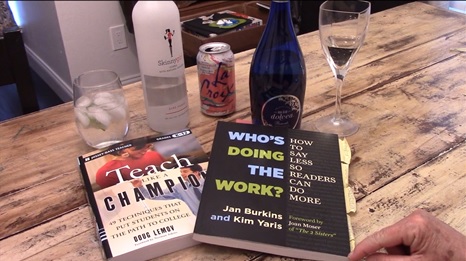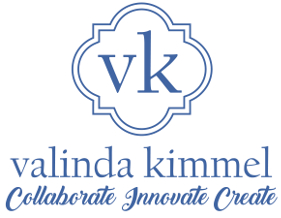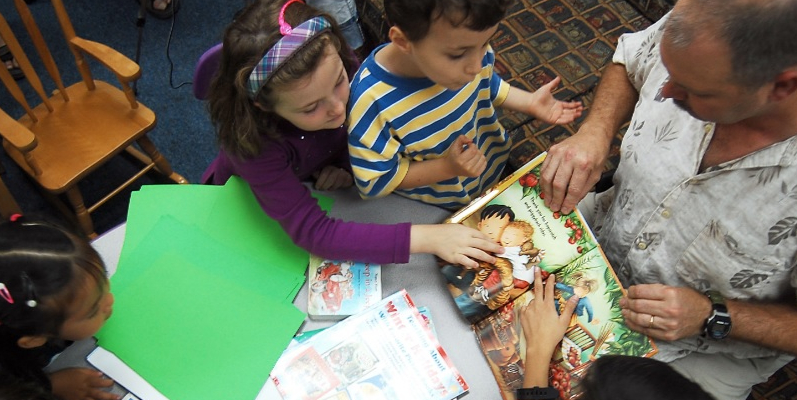We make a big deal in education about the importance of reflection. Teachers are admonished to take time to think about their instruction, or more importantly to reflect on student learning. It’s a powerful process to engage in methodically thinking through how to improve troubling issues that arise in the classroom.
Teachers typically begin by identifying a specific problem, looking for a proven method or strategy, implementing the practice with fidelity and then re-assessing.
The most challenging bit of this reflective process many times is finding proven methods to implement in an effort to improve.
Just last week, I spent an entire day supporting a first-year teacher on our campus. We started out by observing in some classrooms and then reconvening in my office to talk through the instruction and student learning we’d seen in the three classrooms we visited.
She asked an insightful question. “I can see what it is that I need to work on, but where do I get the resources, the ideas? Do I just look at the content and students’ needs and then just make up the tools my kids will use to improve their learning? Do I find a teacher that has gone through the same struggle and then replicate their resources? Should I buy something on Teachers Pay Teachers or take a look at Pinterest?”
(I’ll save my rant about Pinterest and TpT for another blog post.)
I’m so glad she asked. I’d like to disclose a few of the tips I shared with her.

Remember that Professional Books are Nonfiction
Use professional books as reference materials. Don’t feel compelled to read from cover to cover. Check the table of contents and the index for the exact bits you need to solve your problem.
Flip through the book looking at headings and any text features that might give you an idea where you might start (and stop) reading to get the information you need to solve your problem. Be judicious and use your time wisely when you read. If you’ll hold yourself to this method of reading professional books, you’re more likely to seek the help you need instead of telling yourself you don’t have time to read.
Satisfice
One of the most helpful blog posts I’ve read about how to use professional books was written by Dave Stuart Jr. He shared seven tactics to maximize your professional reading. I want to borrow one to share here.
Dave exhorts teachers to satisfice. “To satisfice, you seek a solution to a problem that achieves acceptable results, rather than seeking the solution that achieves optimal results.”
So often, as teachers, we’re looking for the perfect solution to our problem (or a problem for our students). Well, here’s some breaking news—there is no perfect solution. Dave says it so well, I’ll quote him yet again,
“Very, very, very often, I see teachers trying to find optimal solutions when they should be seeking solutions that offer acceptable, or improved, results. The implemented partial solution is superior to the non-implemented, I’m-still-looking-for-it perfect solution. There rarely are silver bullets in education.”
Just Do It
Nike had it right when they chose those three small words as a part of their ad campaign. I know that often I read something that inspires me and before I can turn the page, I’ve talked myself into believing that there is no way I’ll be able to replicate the practice or the results on my own.
That’s not a very effective way to bring about change.
Make a commitment to apply what you read. Be brave. Be faithful to implement your new learning and know that you have the luxury of reflection and that no children will be harmed in the process. Just Do It.
Let’s recap.
Read great professional books from reputable publishing houses. Don’t feel obligated to read every page—only those that speak to your most pressing concern(s). Resist the temptation to look for the absolute optimal solution and search instead for ways to bring about acceptable or improved results. Hold yourself to the practice of faithfully applying what you’ve read.
Now, for the shameless plug.
A beloved (and delightfully snarky) colleague and I meet on occasion for happy hour. We spend the majority of the evening talking about our work as educators. The most valuable part of our conversation is always about the professional books we’re reading (or about to read). This has been such an essential part of my continued growth that we are launching a segment on this blog to extend our happy hour convos to others in the field.

Be ready. Be watching for #BYOBclub. You’ll find it here at Collaborate. Innovate. Create.











Great Advice!
Thanks Alicia! Dave Stuart’s blog post back in 2015 gave me a lot of great inspiration 🙂